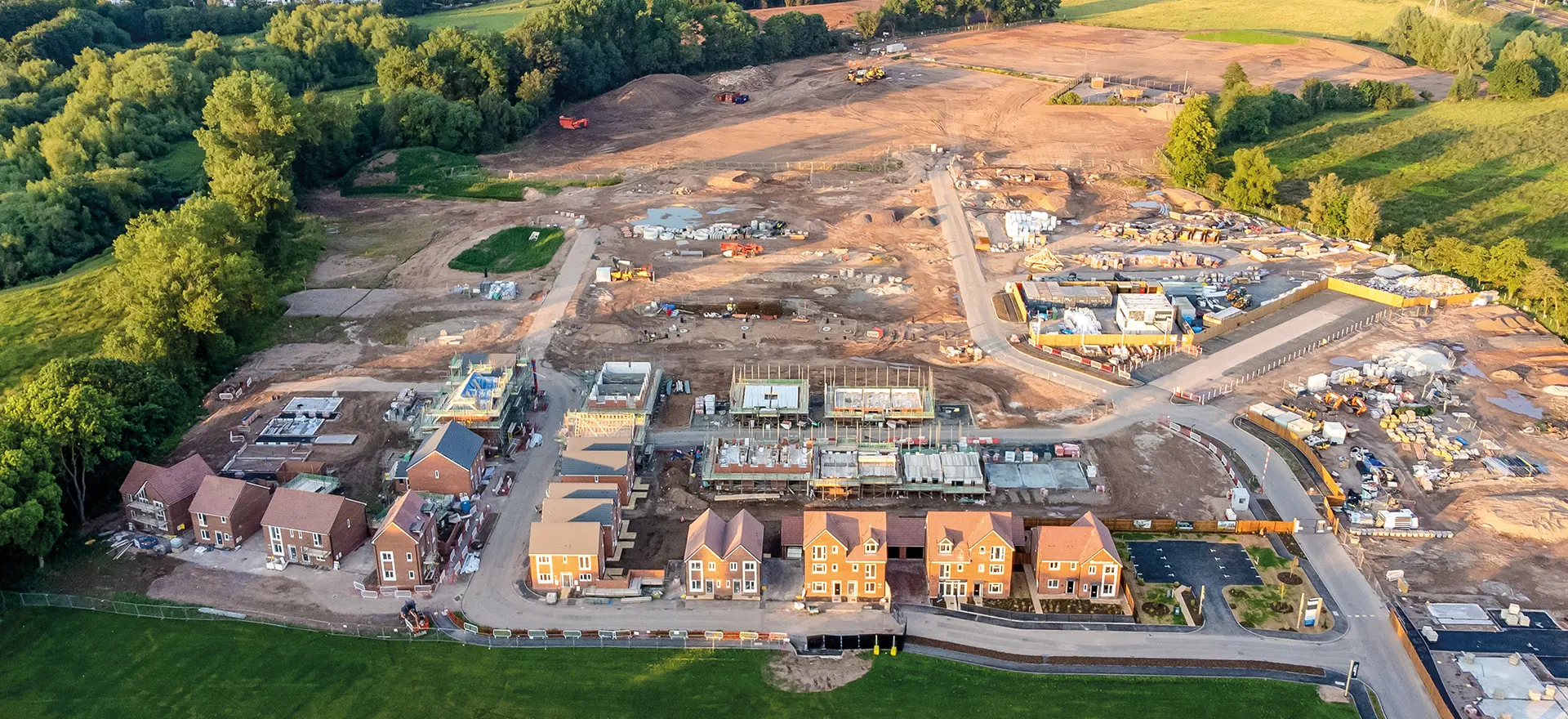The Welsh Government has launched a consultation titled “
Changes to Permitted Development Rights”, inviting stakeholders to provide feedback on proposed new permitted development rights (PDRs) and also a potential change to the definition of major development.
The consultation aims to modernise and streamline the planning system in Wales, making it more efficient, effective, and responsive to current needs.
Key Proposed Amendments
This blog focuses on three key areas of the consultation:
-
Definition of Major Development;
-
Affordable Housing Sites as Meanwhile Uses; and,
-
Permanent affordable housing sites via permitted development.
Definition of Major Development (Housing)
The following types of residential development are currently considered major development:
-
The provision of dwellinghouses where:
-
There are 10 or more dwellinghouses.
-
Sites are of 0.5 hectares (ha) or more.
Where developments fall within this category, this triggers Statutory pre-application consultation (PAC) requirements, which requires the complete draft application to be consulted upon for a period of 28 days prior to its submission to the Local Authority. A Design and Access Statement is also required for major development and the cost of pre application advice is higher.
The Welsh Government proposes increasing the threshold from 10 to 25 dwellinghouses, reducing the need for pre-application consultation for smaller schemes. A corresponding increase in the 0.5-hectare site threshold is also under consideration. Lichfields consider this proposal could go further, aligning with the 50-dwelling and 2 ha site area thresholds used in Scotland
[1] and Northern Ireland
[2]. This would provide greater consistency across the UK and further reduce barriers to development. The Welsh Government Affordable Housing Taskforce: report and recommendations (15 May 2025)
[3] also recommends the threshold is raised to 50 dwellings, in-line with Scotland and Northern Ireland. It is therefore unclear why a lower threshold has been used.
It is considered that the benefits of such changes include:
- Reduced Planning Delays: Smaller projects can proceed without 28-day pre-application consultations. The time saving is greater because of the additional time needed to organise the PAC and to write the PAC Report.
- Cost Savings: Lower administrative costs associated with planning applications. This includes costs of preparing websites and notices, consultant costs and development finance over a shorter period of time.
- Faster Project Delivery: Accelerates the timeline for housing projects, allowing quicker market entry.
The downside of this change is that the views of the public and specialist consultees may not be heard ahead of planning submission. However, applicants can still choose to carry out public consultation but in a way that suits their timescales and budget.
Lichfields queries why this change only applies to housing development and whether there is an opportunity to further increase the 1 ha and 1,000 sqm thresholds for wider land use proposals.
Affordable Housing Sites and Meanwhile Uses
Meanwhile Uses
“Meanwhile uses” are uses of land which are undertaken temporarily while a longer term intended use of the land is being prepared.
Under the existing Part 12A of the Town and Country Planning (General Permitted Development) Order 1995, local authorities can carry out emergency development without planning permission. However, this right is:
-
Time-limited to one year, after which a full planning application is required.
-
Intended for short-term emergency responses, not long-term housing solutions.
This restricts the ability of local authorities and developers to use land flexibly for temporary housing needs, especially in the context of affordable housing.
The Welsh Government proposes to extend and adapt the existing PDR to allow for affordable housing as a meanwhile use. Key features include:
-
A bespoke PDR specifically for temporary affordable housing, such as modular or prefabricated units.
-
The right would extend beyond one year, offering greater flexibility and reducing the need for planning applications.
-
It would include specific conditions, such as:
-
- Controls on window placement for habitable rooms.
- Consideration of proximity to neighbouring properties.
- Potential restrictions in sensitive areas (e.g., Conservation Areas, Areas of Outstanding Natural Beauty, National Parks).
The proposed changes also reflect recommendations made by the Welsh Government’s Affordable Housing Taskforce (15 May 2025), which advocated for:
-
Greater use of meanwhile uses to address short-term housing needs.
-
Permitted development flexibilities to enable rapid deployment of modular and temporary housing.
-
A more streamlined planning process to reduce delays and costs associated with temporary housing delivery.
The Taskforce highlighted successful examples in places including Cardiff’s Grangetown and Llantwit Major, where meanwhile uses have been used effectively to meet urgent housing demand.
Benefits of Proposed Changes
This change is designed to support faster development of temporary housing solutions while maintaining appropriate safeguards, representing a pragmatic and progressive step towards addressing housing need in Wales.
Permanent Affordable Housing
The Welsh Government is exploring the introduction of a new PDR that would allow certain permanent affordable housing schemes to proceed without the need for a full planning application. Instead, a prior approval process would be used to agree specific details such as:
This would represent a significant shift from the current system, where all permanent housing developments – regardless of affordability – require full planning permission, including public consultation and detailed scrutiny by planning officers.
It is acknowledged by Welsh Government that delivering permanent affordable housing sites via PDRs would be challenging due to the need for localised placemaking and lack of scrutiny by consultees as well as the ability for local people to submit comments. Therefore, Welsh Government seeks views on:
-
Whether PDRs should apply to Local Development Plan (LDP) allocations only or include windfall sites too.
-
The scope of prior approval processes to maintain design quality.
-
The potential use of a pattern book of pre-approved house types to reduce assessment burdens.
-
The potential of restricting PDRs in sensitive areas, such as:
-
-
Conservation Areas;
-
Areas of Outstanding Natural Beauty; and,
-
National Parks.
This proposal reflects recommendations made by the Welsh Government’s Affordable Housing Taskforce (15 May 2025), which called for:
-
Streamlined planning routes for affordable housing;
-
Greater use of permitted development to reduce delays and costs; and,
-
Consideration of design coding and pattern books to maintain quality while simplifying approvals.
The Taskforce recognise that the current planning system can be a barrier to delivering affordable homes at pace and scale. Lichfields therefore consider this proposal is a positive and pragmatic step towards accelerating the delivery of affordable housing but consider it could go further by supporting all allocated housing sites and not just 100% affordable housing.
Benefits of Proposed Changes
The proposed PDR for permanent affordable housing would remove the requirement for a full planning application, relying instead on prior approval for specific details, this raises important considerations. The main benefit lies in the significant reduction in time and cost, as developers would no longer need to navigate the full planning process – streamlining approvals and enabling quicker responses to housing needs. However, this comes at the expense of reduced scrutiny by planning officers on design details and a lack of opportunity for public consultation, which could impact the quality and local acceptability of schemes.
That said, this may be less of an issue for allocated sites, where the level of detail required at the Local Development Plan (LDP) stage is already high, providing a degree of pre-established design and policy alignment. To maintain quality while benefiting from efficiency, the use of design coding and pattern books could offer a valuable solution – ensuring consistency and placemaking standards. A limit on the size of schemes that could be delivered via this method could also be introduced.
Conclusion
At Lichfields, we broadly support the proposed changes to PDRs and widening the definition of major development considered within this blog. These amendments will contribute to a more efficient and streamlined planning system in Wales, helping to accelerate the delivery of affordable housing which is a key priority of the Affordable Housing Taskforce.
In a planning system that is getting more and more burdensome it is refreshing to see the Welsh Government seeking to reduce the barriers to development. However, we question whether the consultation goes far enough, querying if the definition should go up to 50 dwellings and whether both housing and non-housing thresholds should also be increased. We would also support all allocated housing developments below certain thresholds being able to make use of the proposed PDRs.
The
consultation runs until 1 July 2025.
Footnotes
[1] Town and Country Planning (Hierarchy of Developments) (Scotland) Regulations 2009 (as amended).
[2] Planning (Development Management) Regulations (Northern Ireland) 2015 (as amended).
[3] Affordable Housing Taskforce: report and recommendations | GOV.WALES



